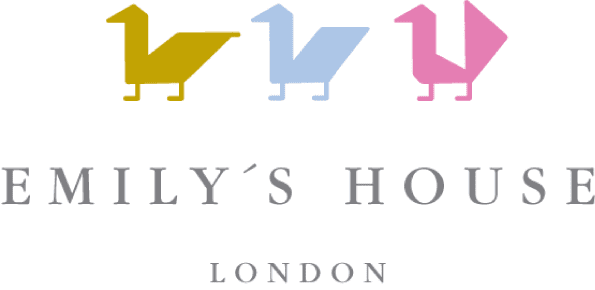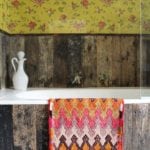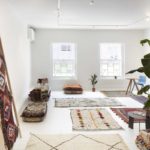House tours – 3 of the best preserved homes from history
Private homes are often the best places to find ideas for your own interiors, as is proved by the wealth of magazines (and websites) documenting such different types – from Apartamento to The World of Interiors and everything in between. Rather than looking only at images, and we do that a lot, we also prize being able to visit the homes from history that have been preserved and are now open as museums. These buildings are rich with tried-and-tested ideas and theories on how to display, how to colour-combine and how to live well. Having visited quite a few already on our travels – although we still have a list as long as your arm of others to see! – below are three favourites that we hope you’ll be compelled to visit for yourselves.
Sir John Soane’s museum, London
The facade of the Museum, Photography ©Gareth Gardner courtesy of Sir John Soane’s Museum
The neo-classical architect Sir John Soane built his home in the heart of London’s Holborn area on the site of 12-14 Lincoln’s Inn Fields – he bought one house at a time to rebuild – and filled it with his outstanding collection of architectural drawings, art, sculpture, books and antioquities. Unsurprisnlgy, many creatives have since cited this museum as a favourite place for inspiration, including another Sir – Paul Smith – for there’s interesting things to be found in every inch of space.
ome Area, ©Derry Moore courtesy of Sir John Soane’s Museum
Sir John supposedly treated the building as an architectural laborotary, constantly remodelling the interiors and the museum was established when he was still alive in a Private Act of Parliament that came into effect on his death in 1837.
Between 1988 and 2005 a restoration project put the building’s grand rooms back to their original colours and mostly reinstated the objects as they were left when Sir John was alive. Thanks to the success of his architecture practice – which worked on the Dulwich Picture Gallery among other projects – Soane collected pieces that are British Museum standard, including the alabaster sarcophagus of Seti I, which is covered in Egyptian hieroglyphs. Apparently when it arrived at the house in 1825 its owner celebrated by throwing a three-day party for 890 friends. The sarcophagus was placed in the basement and lit by hundreds of lamps and a candelabra. Just an ordinary day in an ordinary London home.
No.13 Breakfast Room, ©Derry Moore courtesy of Sir John Soane’s Museum Picture Room Recess displaying Nymph, ©Derry Moore, courtesy of Sir John Soane’s Museum
The house hosts special exhibitions and events and you can currently find Sarah Lucas’s Power In Women sculpures among the Canalettos, Hogarths and Turners. We also love atending the special Christmas events when the whole house is lit by candle.
Only 70 people are admitted at a time, so you expect to find a queue if you go – find out more info on the website.
Finn Juhl’s home, Copenhagn, Denmark
Photo courtesy of Finn Juhl
For mid-century architecture and furniture lovers, the house that Danish designer Finn Juhl built for himself and his first wife in Copenhagen is a must-visit. An architect, interior and furniture designer, Juhl was a key figure in the Danish Design movement of the 1940s and credited with introducing modern Danish design to the States. His home is preserved as it was the day he died in 1989 and is a gorgeous example of that particular gentle and cocooning Danish way of living – Hygge – with natural lime-washed flooring, furniture and lighting classics, and small bursts of colour from textiles, art and accessories throughout. Finn Juhl was apparently a keen collector of carpets – as well as art and sculpture – and we love the way the hot pink kilim rug adds a shot of colour to his living area in the open plan design, and the way other areas are defined and zoned with textiles, both large and small. It’s no surprise to learn that the designer believed in creating from the inside and out – letting furniture create the room, and the room create the facade. It’s a theory also adopted by the likes of Ilse Crawford today, another specialist in cocooning design.
For further reading , take a look at Finn Juhl on Artsy.
Photo courtesy of Finn Juhl Photo courtesy of Finn Juhl Photo courtesy of Finn Juhl
Alvar Aalto House, Helsinki Finland
It will come as no surpirse that Finn Juhl was an admirer of architect and furniture designer Alvar Aalto, who together with his first wife Aino Aalto designed this their home and studio in the outskirts of Helsinki in 1935/36. The area was farmland then and is more like suburbia now, but the house still retains its striking relationship with the outdoors, a key theme of Modernist architecture. In the work studio just off the home’s living room (above), where the couple’s architecture practice came together, Alvar’s favourite place to work was by the bright corner window – despite having designed a more private space for himself to work on, on a mezzanine above the main studio.
A beautiful room in its own right, the private studio also contains a secret staircase that is rumoured to have provided a handy escape for Alvar if unwanted visitors popped round. We love the curtain that acts as a partition between the mezzanine and the main studio below.
The textiles were Aino’s domain. She collected various carpets (and seems to have shared our love of the Moroccan Beni Ouarain) and designed fabrics for Artek, the famous company that she and Alvar helped to found.
Important info if you plan to visit – the house is only accessible if you join a tour and the tours take place at the hours of 1pm, 2pm and 3pm for just 20 people at a time (though when we went there were more in the group). Make sure you check the website before you head there as you can’t just show yourself around.




Leave a Reply
Want to join the discussion?Feel free to contribute!